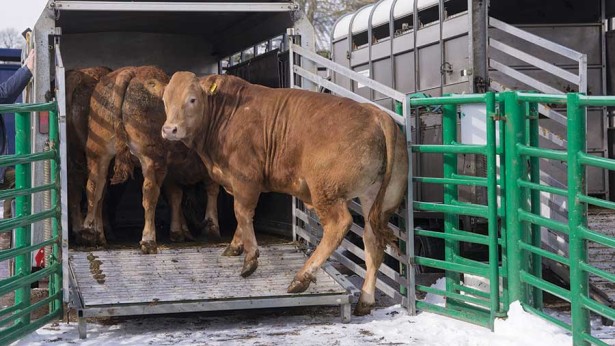Quarantine for Bought in Stock – Q & A
21 September 2022Buying in stock is common practice on many beef and sheep farms especially at this time of year with many breeding sales taking place across the country. However whether you’re buying a new stock bull, replacements heifers or ewe lambs, you also risk bringing disease onto your farm. Purchasing livestock is the most likely way of introducing disease into your herd or flock.
Quarantining animals coming onto your farm is extremely important in risk management and is essential if you want to avoid transfer of diseases between existing stock and any new stock. Remember this works both ways – it is possible for stock already on farm to be infected by new arrivals.
How long should purchased animals be kept in quarantine before they are introduced to other stock?
Animals should be quarantined and kept separately from other stock for at least 3 weeks. However the time period will also depend on the disease. For example TB where cattle are required to be tested 60 days after arrival on farm, so therefore the quarantine period therefore 60 days. Speak to your vet about quarantine periods.
Where to quarantine stock?
The quarantine area / field has to be big enough to keep all the new stock in for a minimum of three weeks. Ensure that fields are stock proof and there is no risk of nose to nose contact with other stock.
Stock should be housed in a separate building from existing stock so to ensure that the same airspace is not being shared between groups. No direct contact should take place between purchased animals and their by-products (such as faeces and urine) and the existing herd. Also think about where the dung and urine is draining to, because these can transmit diseases; for instance, the animals may be in a separate shed, but if their by-products are draining through the yard where your existing stock is, these animals are at risk.
What diseases should farmers test and treat for?
Many of the disease threats are not visible, so protection relies on a combination of treatments and testing
The diseases tested for will depend on diseases are already present within the herd or flock. Screening will depend on the individual farm situation therefore seek advice from your farm vet.
Key diseases to be aware of for cattle include; BVD, Johne’s, IBR, Leptospirosis, Neospora and Campylobacter. Other things to be aware of are external parasites (ringworm and lice) and internal parasites (lungworm and liver fluke).
For sheep, consider roundworms, sheep scab and liver fluke.
During the quarantine period, animals should be vaccinated in line with the rest of the herd / flock. Treat for internal and external parasites whilst animals are still in quarantine. Protocols should be tailored to suit every farm.
What to look for when carrying out a visual / physical assessment?
The quarantine period should be used to keep a close eye on the stock. Key things to look for are, body condition, coughing, nasal discharge, lameness and signs of skin disease.
Sign up to the FAS newsletter
Receive updates on news, events and publications from Scotland’s Farm Advisory Service

